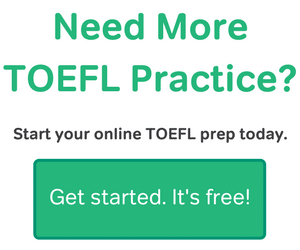In an earlier post, I looked at the “building blocks” that make a sentence or clause: noun phrases, verb phrases, and prepositional phrases.
When you can recognize these kinds of phrases, it gets much easier to understand complex written sentences. Below, we’ll look at examples of the three main phrase types in written English, as they appear in the kind of sentence you might see on the TOEFL exam.
- EXAMPLE SENTENCE:
They identified five variables that determine the profitability of technology startups.- Noun phrases:
1) They (Remember, sometimes a single word can also be a phrase.)
2) five variables that determine the profitability of technology startups (Here, “variables” is the main noun in the noun phrase. All the other words in this very long noun phrase add information about “variables.” This noun phrase is so long that it has two more noun phrases inside of it. See noun phrases 3 and 4 below.)
3) the profitability of technology startups (It’s possible for there to be a smaller noun phrase inside of a larger one.)
4) technology startups (And this is a tiny noun phrase inside noun phrase 3, which in turn is inside noun phrase 2!) - Verb phrases:
1) identified five variables that determine the profitability of technology startups (This verb phrase contains smaller verb phrase 2.)
2) determine the profitability of technology startups - Prepositional phrases:
1) of technology startups
- Noun phrases:
In the example sentence above, the prepositional phrase is very simple. However, it’s possible to have a more complex prepositional phrase, too. Longer prepositional phrases can contain other prepositional phrases, and they can also contain verb phrases and noun phrases. Here’s an example of a longer prepositional phrase:
- EXAMPLE Prepositional Phrase:
in the red house where the old man once slept in peace- Noun phrases:
1) the red house where the old man once slept in peace
2) the old man - Verb phrases:
1) slept in peace - Prepositional phrase:
1) in peace
- Noun phrases:
The example sentence above, “They identified five variables that determine the profitability of technology startups,” is a fairly simple sentence by TOEFL Reading standards. You probably don’t actually need to look too closely at the phrases in that sentence to understand it.
However, it really can help to look at the phrases in more complicated TOEFL sentences. Identifying phrases can seem hard at first. But with practice, you can become very good at it and really boost your reading comprehension.
Try it for yourself! The next time you find a sentence in your English reading that is long and hard to understand, identify the phrases inside it. You can make lists of phrases like the ones above, or you can print out the reading and mark the phrases with a pen.
Practice as much as you can. In my next post, I’ll give you a phrase-identifying activity to do right here at Magoosh.






Leave a Reply